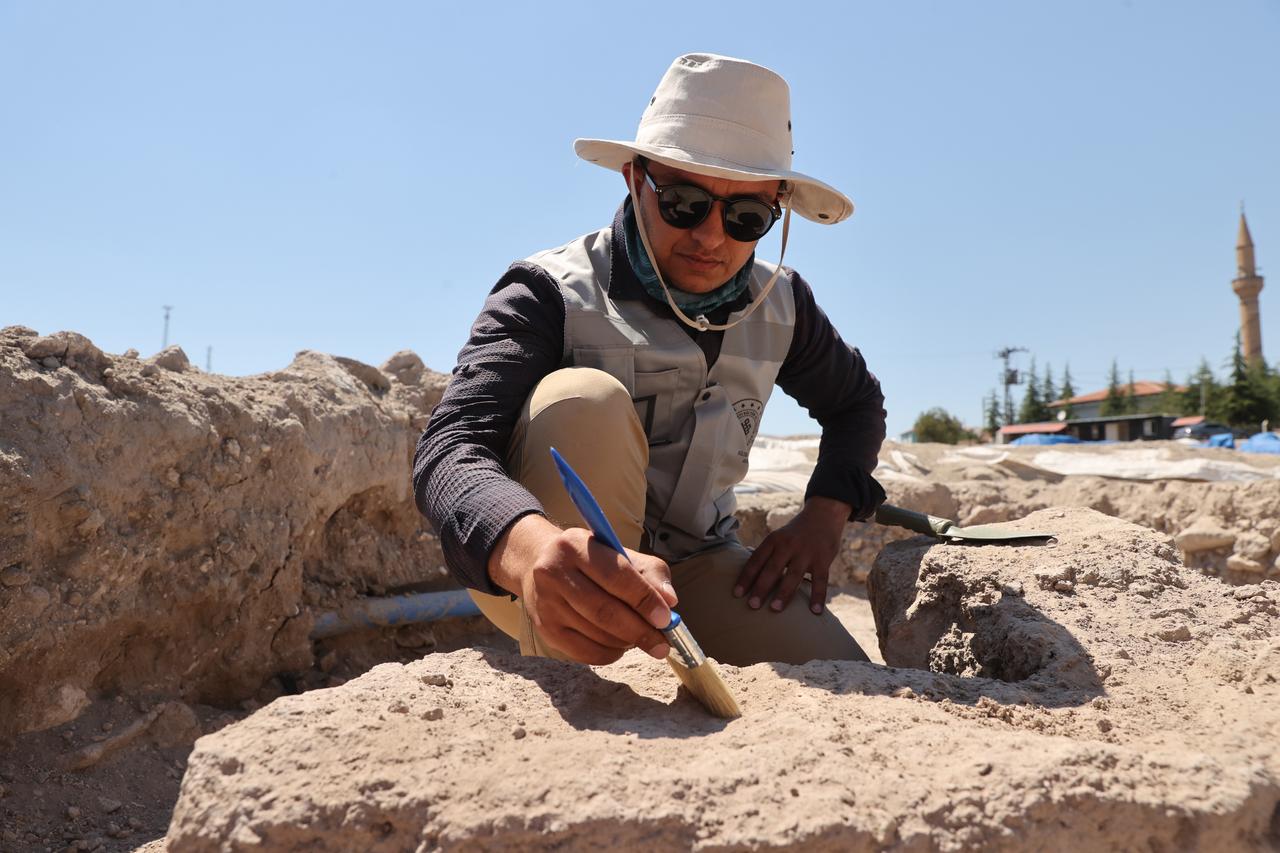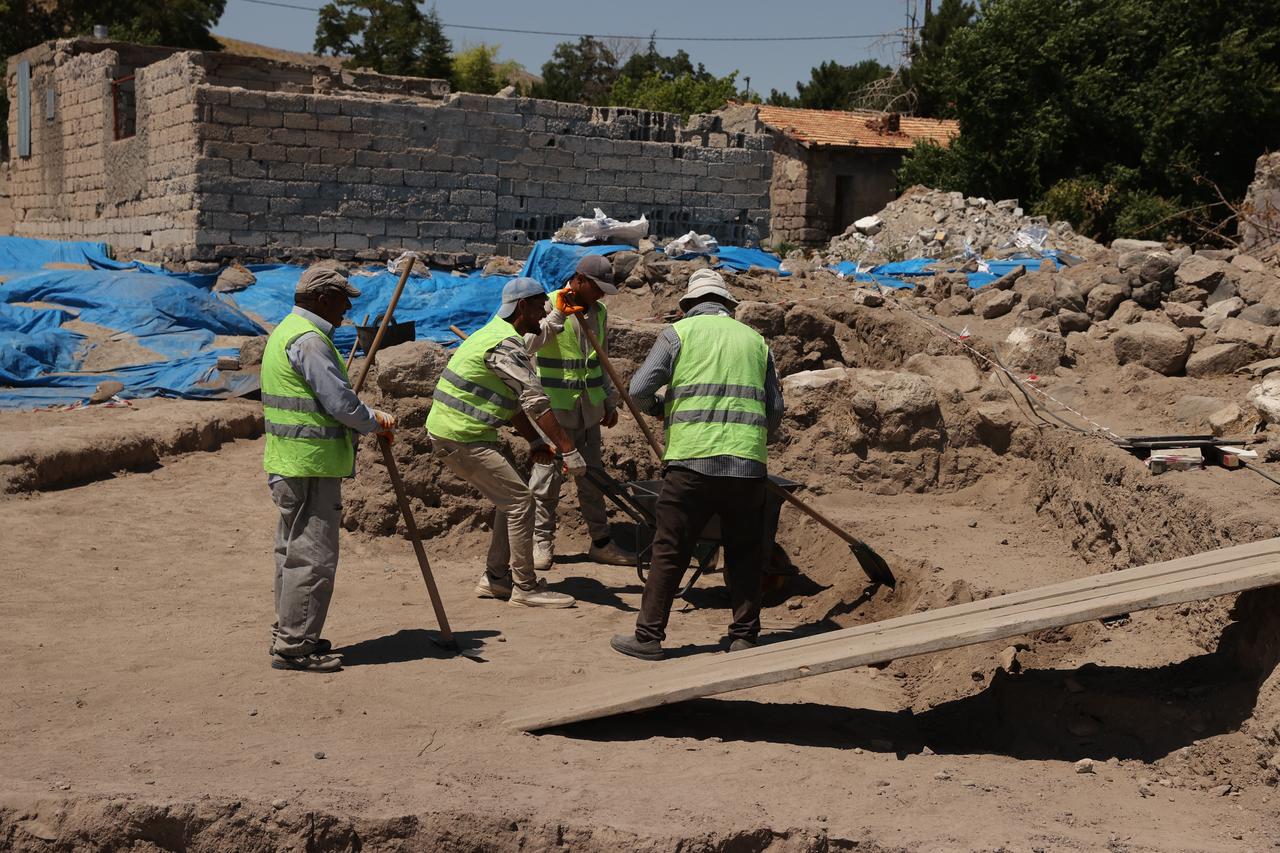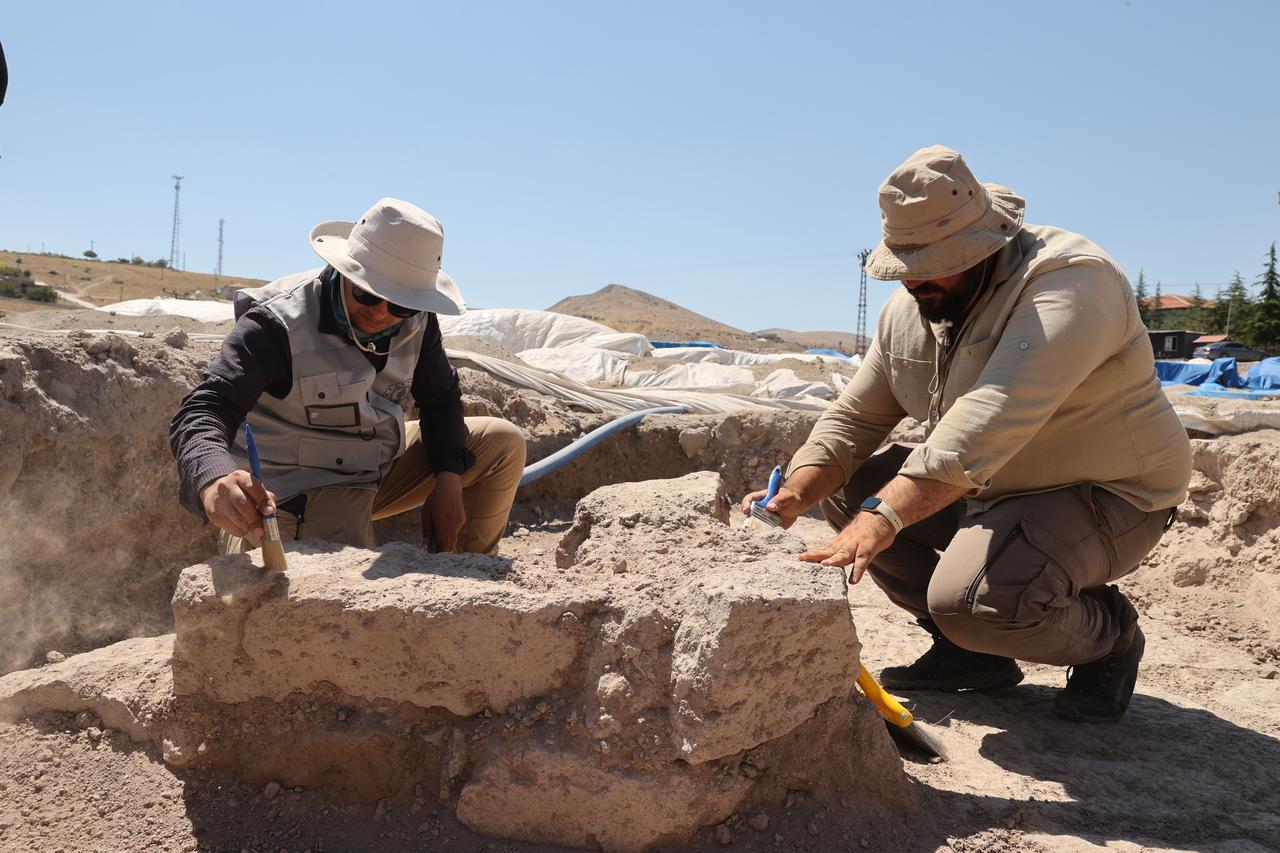
Archaeological excavations have resumed at a Roman-Byzantine villa in the Incesu district of Kayseri, central Türkiye, as a team continues work to uncover a richly decorated site known for its mosaic floors and imperial-era inscriptions.
The excavation, conducted in collaboration with the Turkish Ministry of Culture and Tourism, the Kayseri Metropolitan Municipality, and the Incesu Municipality, is taking place in the Orensehir neighborhood.
A 12-member team is working on site under the supervision of local museum and university officials.

According to Kayseri Museum Director Gokhan Yildiz, authorities aim to accelerate progress by expropriating remaining private properties that are obstructing access to key areas.
Once those sections are cleared, the entire complex may be opened to public visits. Since the beginning of the project in 2021, excavations have been carried out in 32 rooms within the site.
Yildiz noted that the team continues to work with a multidisciplinary approach, bringing together experts to help preserve and present the structure for future generations.
Can Erpek, an art historian from Nevsehir Haci Bektas Veli University and the scientific advisor to the excavation, explained that the villa—referred to as the Orenşehir Roman villa—likely dates back to the third century.
The structure extends over an area of about 3,000 square meters (3229.1 feet), equivalent to roughly three-quarters of an acre.
So far, archaeologists have uncovered approximately 600 square meters of mosaic flooring within the site. The team has come across new mosaic sections during this season’s excavations, and further efforts will focus on exposing and preserving these decorative floors, especially in the eastern part of the villa.

The majority of the mosaics feature geometric motifs, a common theme in Late Roman and Early Byzantine interior decoration. Notably, four inscriptions have also been found embedded in the flooring—one in Latin and three in Greek.
Two of the Greek inscriptions mention a figure named Hyakinthos. According to Dr. Erpek, the titles associated with this individual suggest that he may have been a prominent administrator within the imperial system. “Hyakinthos, yapiyi insa ettiren kisi, ve yazitta bir unvan geciyor,” said Erpek.
"This title leads us to believe he was one of the region's important imperial administrators."